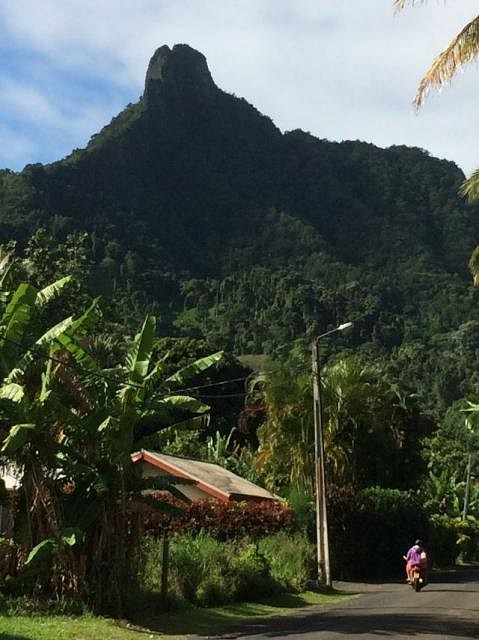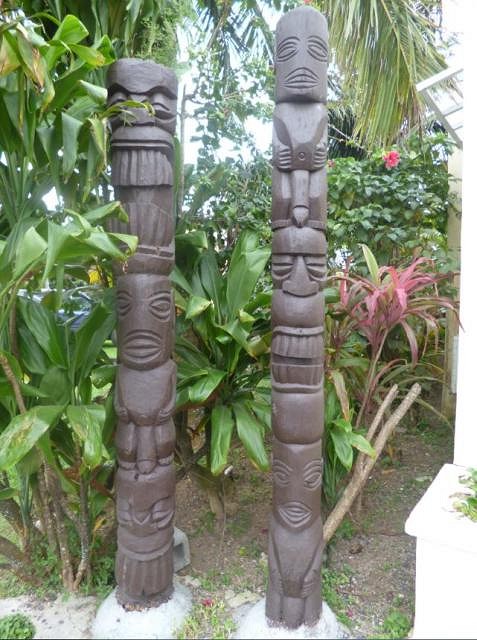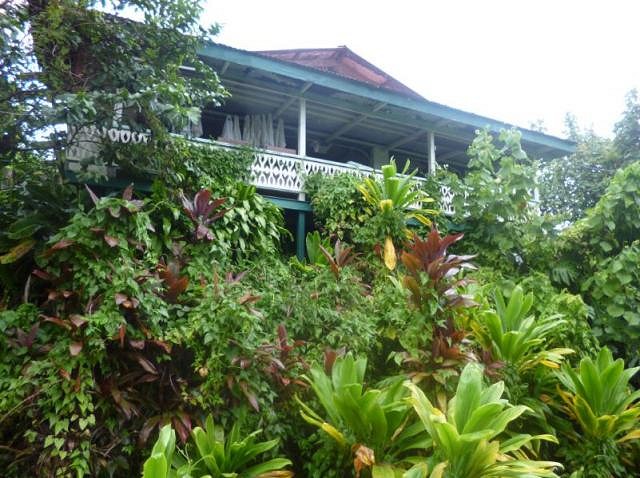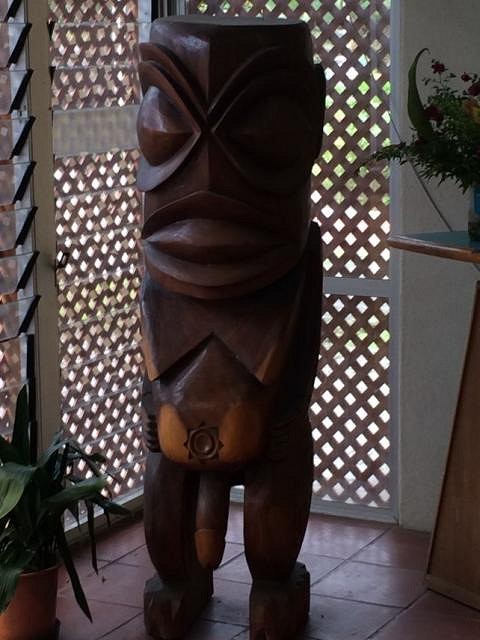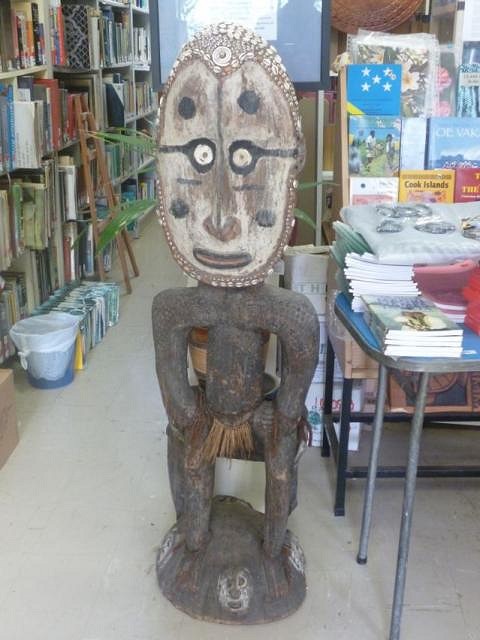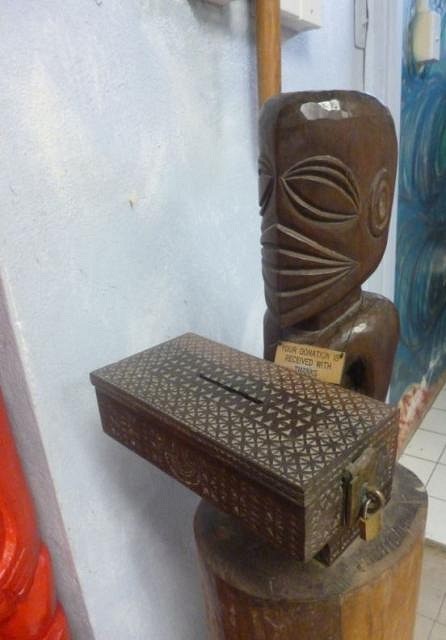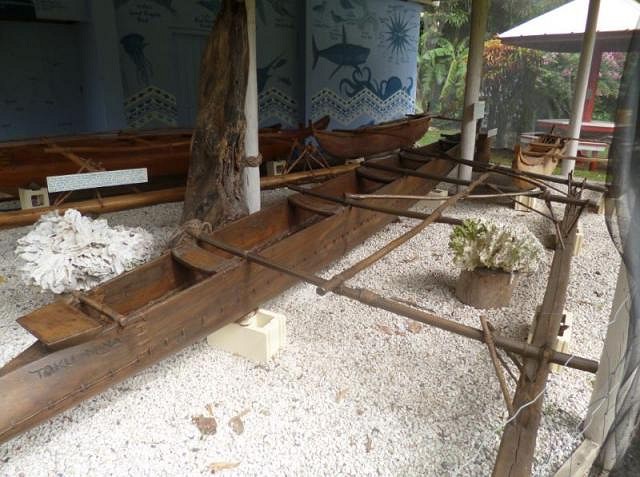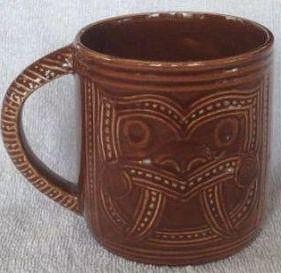Tiki Central / Tiki Travel / Club Nouméa's Rarotongan Tiki Tour
Post #766661 by Club Nouméa on Tue, Jul 26, 2016 7:36 AM
|
CN
Club Nouméa
Posted
posted
on
Tue, Jul 26, 2016 7:36 AM
In Search of Rarotonga's Tikis
You get some odd reactions as a Papaa (white fella) walking around Rarotonga. Walking in itself is an unnatural act there - like the Tahitians, everyone on Rarotonga seems to have a scooter as transport as a bare minimum. And no self-respecting man my age walks anywhere, so the common assumption is that you are either mad or lost; most likely lost as I had several people stop and ask me if I needed directions or a lift as I wandered around the back roads of the island, and even along some of the main streets of Avarua, the sleepy village that is the capital of the Cook Islands. But walking is the best way to see the island, combined with hopping on one of the two buses that go around the ring road. A round trip around the island takes about an hour and costs NZ$5. The buses go two ways: clockwise and...
As I wandered around, going up the back roads and getting odd looks from the locals ("what's that white fella doing round here?"), the thing that struck me most, compared to Tahiti, and certainly compared to Nuku Hiva in the Marquesas, was the relative scarcity of tikis as a landscape feature. Unlike the town of Taiohae on Nuku Hiva, which was about the same size as Avarua, few tikis were to be seen adorning private homes. I actually only discovered one house in Avarua that had carvings outside:
Adorning your front lawn, gateway, or the exterior of your home with these idolatrous figures still appears to be an unnatural concept on Rarotonga, and here I detect what I suspect are the lingering effects of the London Missionary Society and its tiki cleansing programme back in the 19th century. Apart from this home in Avarua, I actually only came across one other private home that had tiki adornment; and that was on the other side of the island, up in the foothills above Aro'a Beach, where I spotted this picturesque old colonial residence that looked like it dated from the 19th century:
Walking a bit further along, I passed the gate:
The gateside carving looked like it had seen better times:
This is not to say there are no other homes on Rarotonga with outdoor tikis, but in eight days of scouring the island, these were the only two I found. It was certainly a marked contrast with Nuku Hiva, where tikis were a common feature outside people's homes. Other places where the lingering effects of the LMS's tiki destruction can be witnessed are in the Cook Islands' two museums. The first one I visited was the National Museum, part of a complex dating from the 1980s (as I recall), that featured tikis, some of them very well carved, but they were contemporary carvings, and none of those on display dated back to the 19th century. Visitors are not allowed to take photos inside, so here is one of their nicely carved but modern-day Tangaroas in the foyer:
It was also not possible to photograph inside the the museum at the Cook Islands Library & Museum, a private institution run by volunteers, although the librarian was kind enough to let me take some photos of the carvings in the library:
A tiki stands inside the library entrance, not far from a smaller tiki carefully carved from coral:
And some pieces from further afield. This fellow looks Marquesan although he may have been carved in Tahiti:
And there were some Papuan carvings in the library:
Tiki at the museum entrance:
This private museum's collection of Rarotongan tikis likewise featured carvings that were comparatively recent, although there was a 19th century god staff on display, on loan from the Canterbury Museum (in Christchurch, New Zealand). So this private museum is worth a look, and it also has an interesting cross-section of artefacts such as the canoes displayed in a lean-to outside:
But while there was a relative scarcity of tikis in the landscape, there were more around than I initially thought....
[ Edited by: Club Nouméa 2016-07-26 07:51 ] [ Edited by: Club Nouméa 2016-07-26 19:19 ] |

